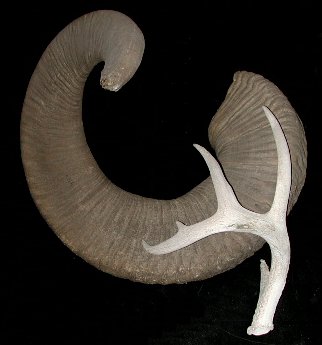

Mammalogists study mammals, and it's really easy to get their goat, so to speak. This can be fun, but there's one drawback—you'll almost always get a lecture in return. Sing, "Oh, give me a home where the buffalo roam,...", and you're sure to hear a muttered "bison, not buffalo", followed by a treatise on differences between these very distinct animals. Or mention a "Mule Deer's horn" to your favorite zoologist. After he stops cringing, you're sure to get the $2 lecture on the differences between horns and antlers and why you should never confuse the two. Probably followed by, "Repeat after me: cattle have horns, deer have antlers".
We've a wealth of common names in the Chihuahuan Desert that are
sure to set a mammalogist's teeth on edge. How about Ringtail Cat, for an animal
closely related to Raccoons, or the Spanish Ratón Volador (flying mouse) for a bat,
who's more closely related to us than to rodents? Just think of all the fun you can
have playing with your scientist's mind and emotions!

Contributor: Arthur H. Harris, Laboratory for Environmental Biology, Centennial Museum, University of Texas at El Paso.
Desert Diary is a joint production of the Centennial Museum and KTEP National Public Radio at the University of Texas at El Paso.

Mountain Sheep (Ovis canadensis) horn and White-tailed Deer (Odocoileus virginianus) antler. The horn is of a keratin protein, while antlers are bone.